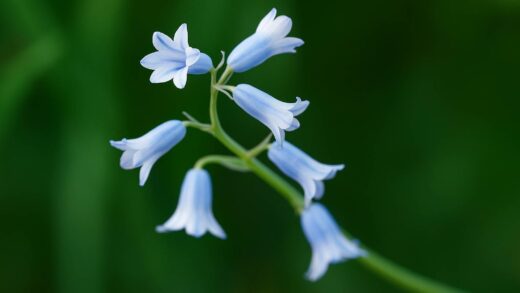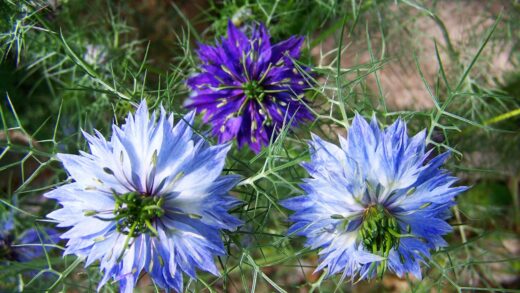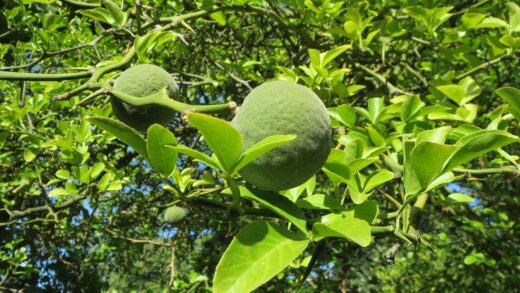The ability to withstand cold temperatures is the defining characteristic of the trifoliate orange, setting it apart from all other citrus. This deciduous shrub is remarkably hardy, capable of surviving winter temperatures that would be instantly fatal to conventional orange or lemon trees. Its natural hardiness allows it to be grown outdoors year-round in temperate climates, where it adds unique structural interest to the winter landscape with its tangled, green, thorny branches and persistent, aromatic yellow fruits. The plant achieves this resilience by entering a state of deep dormancy, shedding its leaves in autumn and effectively shutting down its metabolic processes to conserve energy and prevent cellular damage from freezing.
While mature, well-established plants are exceptionally tough, younger specimens benefit from some consideration and protection during their first few winters. A newly planted trifoliate orange has not yet developed the extensive root system or the woody maturity needed to face the full rigors of winter unabated. Providing some form of winter protection for the first two or three years can make a significant difference in its survival and its vigor the following spring. This early care helps to ensure the plant establishes a strong foundation, leading to a resilient specimen that will require no special winter attention in the future.
The process of winterization for a trifoliate orange is not about trying to keep it warm, but rather about mitigating the most damaging aspects of the winter environment. The primary threats are not just the cold itself, but also the drying effects of winter wind, the potential for sunscald on the bark, and the damage that can be caused by fluctuating temperatures. Proper preparation in the autumn, such as ensuring the plant is well-hydrated before the ground freezes and applying a protective layer of mulch, can greatly enhance its ability to endure the dormant season without stress or injury.
For trifoliate oranges grown in containers, the approach to wintering is necessarily different. The root systems of potted plants are far more vulnerable to cold than those of in-ground plants because they are not insulated by the large thermal mass of the earth. Container-grown specimens require a more active wintering strategy to protect their roots from freezing solid, which can be fatal. Understanding the specific needs of both in-ground and containerized plants is key to successfully guiding them through the winter months and ensuring their return to vigorous growth in the spring.
Preparing for dormancy
The preparation for successful wintering of a trifoliate orange begins in the late summer and autumn. One of the most important steps is to cease all fertilization by late July or early August. Applying nitrogen-rich fertilizers late in the season encourages a flush of new, tender growth. This growth will not have sufficient time to mature and “harden off” before the first frosts arrive, making it extremely vulnerable to cold damage. Allowing the plant to naturally slow its growth as the days get shorter and temperatures cool is a crucial part of its preparation for dormancy.
More articles on this topic
Proper hydration before the ground freezes is another critical element of autumn preparation. As the plant enters dormancy, it will continue to lose a small amount of moisture through its stems, especially on windy days. If the soil is dry when it freezes, the plant will be unable to replenish this lost moisture, a condition known as winter desiccation. Therefore, it is essential to ensure the plant receives adequate water throughout the autumn. If rainfall is scarce, provide one or two deep, thorough waterings before the first hard freeze is expected, allowing the soil to absorb the moisture fully.
Cleaning up the area around the base of the plant is a good horticultural practice that can help reduce overwintering sites for potential pests and fungal spores. Raking up and disposing of fallen leaves and any dropped fruit is advisable. While the trifoliate orange is disease-resistant, this general sanitation helps to maintain a healthier garden environment. This is also the time to apply a protective layer of organic mulch around the base of the plant, which will be vital for insulating the root system.
As autumn progresses, the trifoliate orange will provide a clear visual signal that it is entering dormancy. The trifoliate leaves will turn a brilliant shade of yellow, providing a final burst of ornamental color before they drop from the plant. This natural leaf fall is a sign that the plant has successfully completed its seasonal cycle and is ready for the cold months ahead. The persistent yellow fruits often remain on the bare, green branches, adding a unique decorative element to the winter garden.
Protecting young plants in winter
Young trifoliate orange plants, particularly those in their first or second winter in the garden, are more susceptible to cold injury than their mature counterparts. Their smaller root systems and less substantial woody structure make them more vulnerable to the combined challenges of freezing temperatures and winter wind. Providing a simple shelter can significantly improve their chances of emerging from winter unscathed. One of the most effective methods is to create a windbreak or a physical wrap around the plant after it has gone dormant and the ground has begun to freeze.
More articles on this topic
A common and effective way to protect a young plant is to create a small cage around it using stakes and burlap. Drive three or four stakes into the ground around the perimeter of the plant, and then wrap burlap around the stakes to create a protective screen. This structure does not need to be airtight; its primary purpose is to shield the plant from the harsh, drying force of winter winds, which is often more damaging than the cold itself. The top can be left open to allow for air circulation and to prevent heat buildup on sunny days.
Another method for protecting young plants involves the use of insulating materials. After the first hard freeze, the burlap-wrapped enclosure can be loosely filled with an insulating material like straw or shredded leaves. This provides an additional buffer against extreme temperature fluctuations. It is important to wait until the plant is fully dormant and the weather is consistently cold before adding this insulation. Adding it too early when the weather is still mild could trap moisture and warmth, potentially leading to fungal issues or encouraging the plant to break dormancy prematurely during a warm spell.
Regardless of the method used, any protective wraps or insulation should be removed in the early spring as the threat of severe cold passes. This should be done gradually, perhaps on a cloudy day, to allow the plant to re-acclimate to direct sunlight and wind. Removing the protection too early can expose tender new buds to late frosts, while leaving it on too long can inhibit new growth and create a humid environment conducive to disease. Careful timing of both the application and removal of winter protection is key to its success.
Overwintering in containers
Growing a trifoliate orange in a container requires a different approach to winter care because the root system is completely exposed to ambient air temperatures. While the branches can withstand deep freezes, the roots are much less hardy. If the soil in the pot freezes solid for an extended period, the roots will be killed, and the plant will not survive. Therefore, the primary goal of wintering a containerized trifoliate orange is to protect the root ball from freezing.
For gardeners in regions where winter temperatures regularly drop well below freezing for long periods, the most reliable method is to move the container to a protected, unheated location. An attached garage, an unheated basement, a garden shed, or a cold frame are all excellent options. The location should be cold enough to keep the plant dormant but not so cold that the root ball freezes. The plant does not require light during dormancy, so a dark location is perfectly acceptable. It is important to check the soil moisture every few weeks and provide a small amount of water if it becomes completely dry.
In climates with milder winters where the ground does not freeze solid, it may be possible to overwinter the container outdoors with extra insulation. The pot can be moved to a sheltered location, such as against a south-facing wall of the house, to take advantage of radiant heat. The container itself should be insulated by wrapping it in burlap, bubble wrap, or old blankets. Another effective technique is the “pot-in-pot” method, where the container is placed inside a larger pot, and the gap between the two is filled with an insulating material like straw or wood chips.
Grouping several container plants together can also help to create a shared thermal mass that reduces the impact of temperature fluctuations on each individual pot. It is also beneficial to place the pots on “pot feet” or bricks to lift them off the cold ground, which can improve drainage and prevent the base of the pot from freezing to the patio or deck. The key is to buffer the root system from the most extreme and rapid temperature swings that occur during the winter months.
Post-winter assessment and care
As winter draws to a close and the first signs of spring emerge, it is time to assess the trifoliate orange for any signs of winter injury. The most common form of damage is dieback, where the tips of some branches have been killed by the cold. This is usually easy to spot as the affected tips will be brown, dry, and brittle, showing no signs of life. It is best to wait until the plant begins to leaf out before doing any significant pruning. This makes it absolutely clear which parts of the plant are dead and which are viable, ensuring that no living wood is accidentally removed.
Once the new buds have started to swell and break open, any winter-killed branches can be safely pruned back. Make clean cuts back to the nearest living bud or side branch. This clean-up not only improves the appearance of the plant but also removes dead material that could potentially harbor diseases. For young plants that had winter protection, this is also the time to fully remove any remaining wraps or burlap, allowing the plant to receive full sun and air circulation.
Early spring is also the ideal time to apply a fresh layer of mulch and a dose of balanced, slow-release fertilizer. This replenishes the soil’s nutrients and provides the plant with the energy it needs to fuel its spring growth flush. The mulch will help to conserve the spring rains and keep the soil temperature stable as the season progresses. A deep watering after fertilizing will help to activate the nutrients and ensure the plant is well-hydrated as it breaks dormancy.
Following a successful winter, a healthy trifoliate orange will quickly begin to produce its fragrant white flowers, often before the leaves have fully emerged. The emergence of these blossoms is the ultimate sign that the plant has weathered the dormant season well and is ready for another year of growth. By providing thoughtful care in the autumn and assessing its needs in the spring, a gardener can ensure this uniquely hardy citrus thrives and remains a highlight of the garden for many years.


















